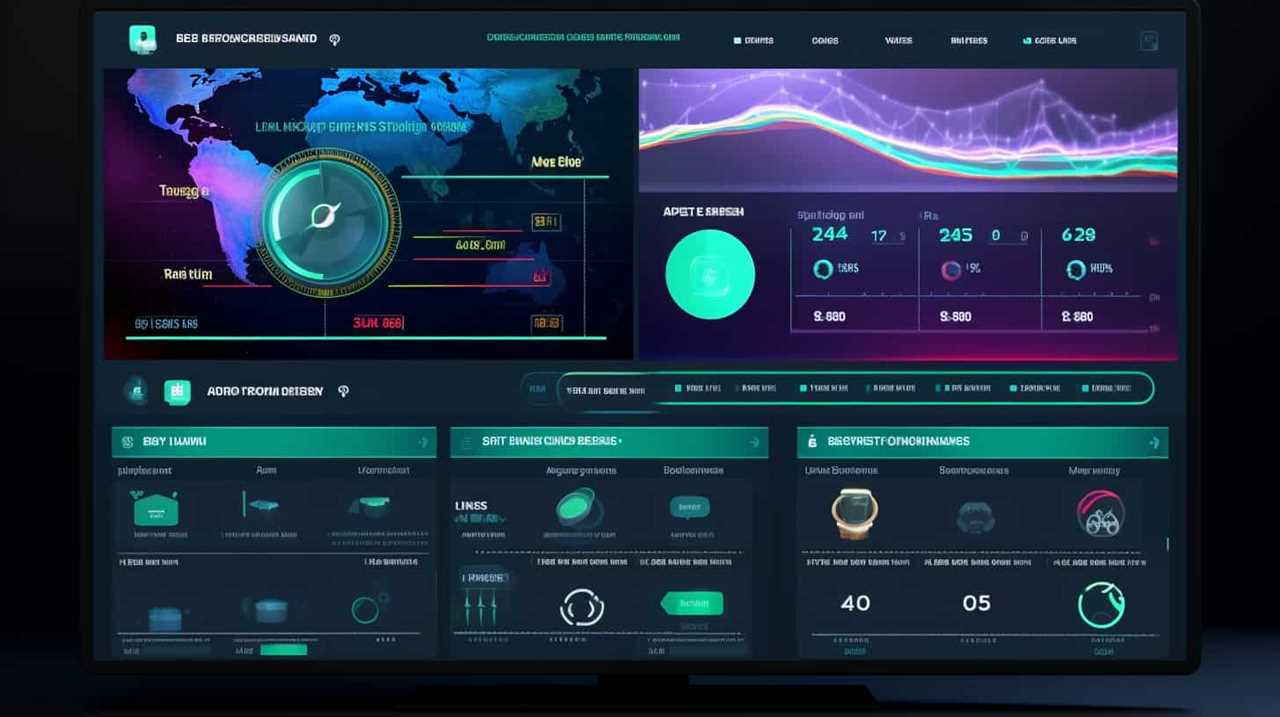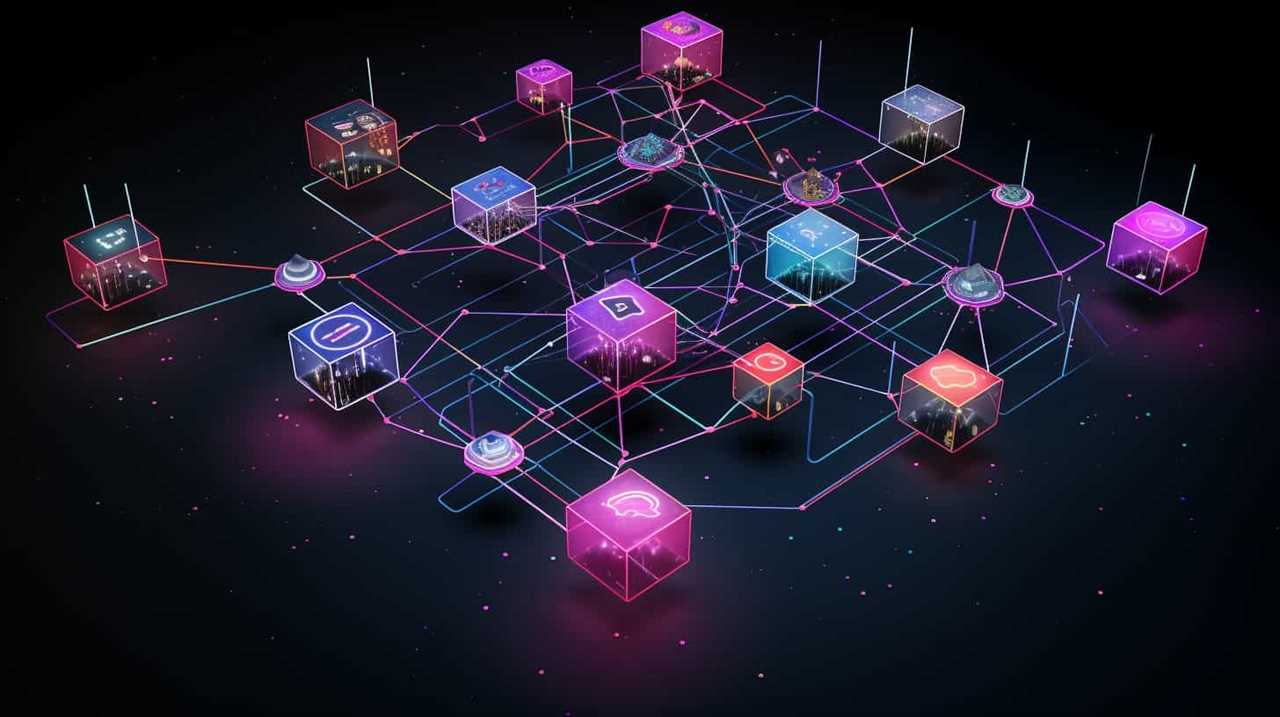Concerned about the privacy risks and obstacles linked to AI systems? You’ve come to the right place! Introducing the ultimate AI Privacy Blueprint created to safeguard your operations against any potential threats.
From unauthorized access to data breaches and manipulation of algorithms, to adversarial attacks and insider threats, our comprehensive solution addresses all legal and ethical concerns.
Join us as we delve into the world of AI security and equip you with the knowledge and tools needed for mastery.
Key Takeaways
- Robust data privacy regulations are needed to address privacy risks in AI systems.
- Implementing strong security measures, such as encryption techniques and access controls, is crucial to prevent unauthorized access and data breaches in AI.
- Adversarial attacks on AI systems can be mitigated through continuous monitoring, updating algorithms, and implementing robust defense mechanisms.
- Insider threats in AI security can be mitigated through strict access controls, regular monitoring, comprehensive training, and compliance with data protection regulations.
Privacy Risks in AI Systems
In the article, we’ll explore the privacy risks associated with AI systems. As AI technology continues to evolve and become more prevalent in various industries, it’s crucial to address the potential threats to data privacy.

One of the key concerns is the growing need for robust data privacy regulations. With the increasing amount of personal information being collected and analyzed by AI systems, it’s essential to establish strict guidelines to protect individuals’ privacy rights.
Additionally, ethical implications arise when AI systems have access to sensitive data, such as medical records or financial information. Striking the right balance between utilizing AI for innovation and safeguarding privacy is a challenge that requires careful consideration.
Transitioning into the subsequent section about unauthorized access to AI data, it’s important to understand the potential consequences of not adequately addressing privacy risks.
Unauthorized Access to AI Data
When it comes to unauthorized access to AI data, there are two crucial aspects that need to be addressed:

preventing data breaches and securing data access.
To prevent breaches, organizations must implement robust security measures such as encryption, access controls, and regular audits.
Additionally, securing data access requires the implementation of multi-factor authentication and strict user permissions to ensure that only authorized individuals can access sensitive AI data.
Preventing AI Data Breaches
Our team actively works on preventing unauthorized access to AI data, ensuring the privacy and security of our operations. To effectively prevent AI data breaches and protect against unauthorized access, we implement a range of AI data protection measures, including:

- Encryption: We employ strong encryption techniques to secure AI data both at rest and in transit, minimizing the risk of data leaks and unauthorized access.
- Access Control: We implement strict access controls, ensuring that only authorized personnel have access to AI data. This includes role-based access control and multi-factor authentication to prevent unauthorized users from gaining access.
- Monitoring and Auditing: We continuously monitor and audit our AI systems to detect any suspicious activities or potential breaches. This allows us to take immediate action and mitigate any risks before they escalate.
Securing AI Data Access
To fortify the protection of AI data, we implement robust measures to secure access and prevent unauthorized breaches. Securing data privacy is of utmost importance in AI operations, as the sensitive nature of the data requires stringent safeguards. We employ a multi-layered approach to AI data protection, combining encryption, access controls, and authentication mechanisms. Our comprehensive strategy ensures that only authorized personnel can access AI data, reducing the risk of unauthorized breaches. To convey the significance of our approach, we present a table outlining the key measures we employ to secure AI data access:
| Measure | Description | Purpose |
|---|---|---|
| Encryption | Utilize advanced encryption algorithms to protect AI data | Prevent unauthorized access to sensitive data |
| Access Controls | Implement role-based access controls to restrict data access | Limit access to authorized personnel |
| Authentication Mechanism | Utilize strong authentication methods to verify user identity | Ensure only authorized users can access data |
Data Breaches in AI Operations
When it comes to AI operations, data breaches pose a significant threat, requiring us to take proactive measures to prevent them.
By implementing robust security measures and encryption protocols, we can safeguard against unauthorized access to AI data.
Additionally, addressing privacy risks in AI is crucial, as the sensitive nature of the data involved requires us to prioritize the protection of individuals’ personal information.

Therefore, securing AI systems is paramount to maintaining the trust and integrity of the technology.
Preventing AI Data Breaches
As AI becomes increasingly prevalent, it’s crucial for us to consistently implement robust measures to mitigate the risk of data breaches in AI operations. Preventing data leaks and ensuring AI data protection are essential for maintaining the integrity and security of AI systems.
To achieve this, we must focus on the following:
- Implementing strong encryption protocols: By encrypting sensitive data, we can protect it from unauthorized access, ensuring that even if a breach occurs, the data remains unreadable.
- Strict access controls: Limiting access to AI systems and data to only authorized personnel minimizes the risk of data breaches caused by human error or malicious intent.
- Regular security audits: Conducting regular assessments of AI systems and their associated infrastructure helps identify vulnerabilities and allows for timely remediation, reducing the chances of data breaches.
Privacy Risks in AI
In the AI Privacy Blueprint article, we address the privacy risks associated with data breaches in AI operations. These breaches can have significant privacy implications, as they can expose sensitive information and compromise the confidentiality and integrity of AI systems. AI data protection is crucial in safeguarding the privacy of individuals and organizations.

Data breaches in AI operations can occur through various means, such as unauthorized access, hacking, or insider threats. The consequences of such breaches can be severe, leading to reputational damage, legal and regulatory penalties, and financial losses. To mitigate these risks, organizations must implement robust security measures, including encryption, access controls, and regular security audits.
By prioritizing privacy and implementing effective data protection strategies, organizations can ensure the confidentiality and security of their AI operations.
Transitioning into the subsequent section about ‘securing AI systems’, it’s important to understand the various methods and techniques that can be employed to safeguard AI systems from potential threats.
Securing AI Systems
To ensure the security of our AI systems, we employ robust measures to protect against data breaches in AI operations. Safeguarding the privacy of data and securing AI models are paramount in the rapidly evolving landscape of AI deployment. Here are three key practices we adhere to:

- Encryption: We utilize strong encryption algorithms to protect data both at rest and in transit, ensuring that unauthorized access is virtually impossible.
- Access Control: We implement strict access controls, granting privileges only to authorized personnel. This prevents unauthorized individuals from tampering with or extracting sensitive data.
- Continuous Monitoring: We employ advanced AI-powered monitoring tools to detect and respond to any suspicious activity or attempts to breach our AI systems. This proactive approach allows us to identify and mitigate potential threats before they escalate.
Manipulation of AI Algorithms
Guarding against the manipulation of AI algorithms is crucial for ensuring the integrity and effectiveness of our operations. Adversarial manipulation and algorithmic vulnerability pose significant threats to the reliability and trustworthiness of AI systems.
Adversarial manipulation refers to the deliberate exploitation of vulnerabilities in AI algorithms to deceive or mislead the system. This can lead to the generation of incorrect or biased outputs, compromising the decision-making process.
Algorithmic vulnerability refers to weaknesses in the design or implementation of AI algorithms that can be exploited to manipulate their behavior. These vulnerabilities can be exploited by malicious actors to gain unauthorized access, alter data, or tamper with the system’s functionality.
To address these risks, it’s essential to continuously monitor and update AI algorithms, implement robust security measures, and conduct rigorous testing and validation to identify and mitigate potential vulnerabilities. By doing so, we can protect our operations from the damaging consequences of algorithmic manipulation.

Adversarial Attacks on AI Systems
As we delve into the topic of adversarial attacks on AI systems, it’s crucial to understand the potential threats they pose to our operations. Adversarial attacks on machine learning models have become a significant concern in recent years, as they exploit vulnerabilities in AI systems to manipulate their outputs.
To defend against AI attacks, we must consider the following:
- Evasion attacks: These attacks aim to trick the AI system by introducing carefully crafted inputs that are designed to deceive the model into making incorrect predictions.
- Poisoning attacks: In these attacks, adversaries manipulate the training data to inject malicious samples, compromising the model’s integrity and performance.
- Model stealing attacks: Adversaries attempt to extract sensitive information about the AI model by querying it and using the responses to reconstruct a replica.
Understanding these adversarial attacks and implementing robust defense mechanisms is vital to ensure the security and reliability of AI systems.
Now, let’s move on to the subsequent section about insider threats to AI privacy.

Insider Threats to AI Privacy
Moving forward, let’s delve into the subtopic of insider threats to AI privacy and explore the potential risks they pose to our operations.
Insider threats refer to individuals within an organization who’ve authorized access to sensitive data and can exploit it for personal gain or malicious intent. These threats can be particularly dangerous as insiders have knowledge of the system’s vulnerabilities and can manipulate data without raising suspicion.
Data manipulation by insiders can lead to unauthorized access, theft, or alteration of sensitive information, compromising the privacy of AI systems. Such actions can have severe consequences, including financial loss, reputational damage, and legal implications.
To mitigate insider threats, organizations should implement strict access controls, regularly monitor and audit system activity, and provide comprehensive training to employees on data privacy and security protocols.

Legal and Ethical Concerns in AI Security
To address the potential risks posed by insider threats to AI privacy, we must now delve into the legal and ethical concerns surrounding AI security. As AI continues to advance and become more integrated into our daily lives, it’s crucial to consider the legal implications and ethical considerations that arise.
Here are some key points to consider:
- Legal Implications:
- Compliance with data protection and privacy regulations, such as GDPR or CCPA.
- Intellectual property rights and ownership of AI algorithms and models.
- Liability and accountability for AI decisions and actions.
- Ethical Considerations:
- Ensuring fairness and avoiding bias in AI algorithms and decision-making processes.
- Transparency and explainability of AI systems to build trust with users.
- Safeguarding against the misuse of AI for malicious purposes.
Safeguarding AI Operations AgAInst Threats
Now we’ll address the measures we can take to safeguard AI operations against threats.
Safeguarding AI models is crucial to protect the privacy and security of sensitive data. To achieve this, organizations need to implement robust security measures and adhere to privacy regulations in AI.

Firstly, it’s essential to ensure that AI models are properly encrypted and access to them is restricted. This prevents unauthorized individuals from tampering with or stealing valuable data.
Secondly, organizations should regularly update their AI models to address any vulnerabilities or weaknesses. This includes monitoring for potential threats and implementing patches or updates as needed.
Additionally, organizations must comply with privacy regulations in AI, such as obtaining informed consent from individuals whose data is being used in AI operations.
Frequently Asked Questions
What Are the Potential Legal Consequences of Unauthorized Access to AI Data?
Unauthorized access to AI data can have serious legal implications. It can lead to breaches of privacy, intellectual property theft, and regulatory violations. We must proactively safeguard our operations to mitigate these risks.

How Can AI Algorithms Be Manipulated and What Are the Potential Consequences?
Manipulating AI algorithms can have serious consequences. It can lead to biased decision-making, security breaches, and misinformation. Safeguarding against these threats is crucial to protect the integrity and reliability of AI systems.
What Are Some Examples of Adversarial Attacks on AI Systems?
Adversarial attacks on AI systems can take various forms, such as targeted manipulation or evasion attacks. These techniques exploit vulnerabilities in the algorithms, allowing malicious actors to manipulate the system’s behavior for their own benefit.
How Can Insider Threats Impact the Privacy and Security of AI Operations?
Insider threats pose significant risks to the privacy and security of AI operations. Data breaches and malicious actions from within an organization can compromise sensitive information and undermine the integrity of AI systems.
What Ethical Concerns Arise From the Use of AI in Safeguarding Operations AgAInst Threats?
Ethical implications and privacy concerns arise when using AI to safeguard operations against threats. We must consider the potential misuse of data, bias in decision-making algorithms, and the impact on personal privacy rights.

Conclusion
In conclusion, safeguarding AI operations against threats is of utmost importance. With the increasing risks of unauthorized access, data breaches, algorithm manipulation, adversarial attacks, insider threats, and legal and ethical concerns, it’s crucial to implement robust privacy measures.
By doing so, we can protect sensitive AI data and ensure the integrity and reliability of AI systems. Let’s fortify our defenses and create an impenetrable fortress of security, paving the way for a safer and more trustworthy AI landscape.









